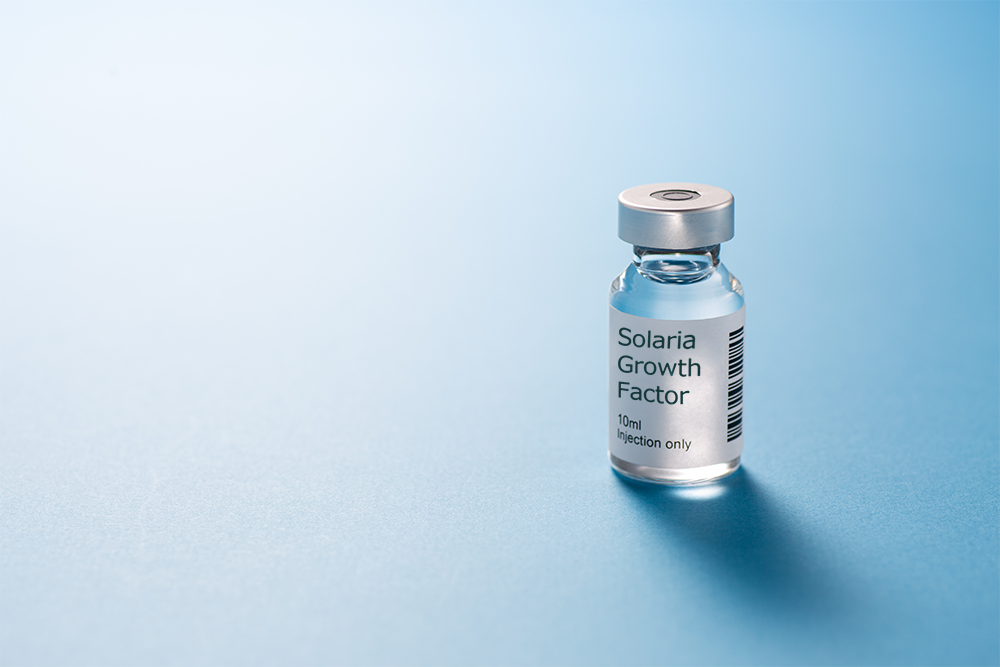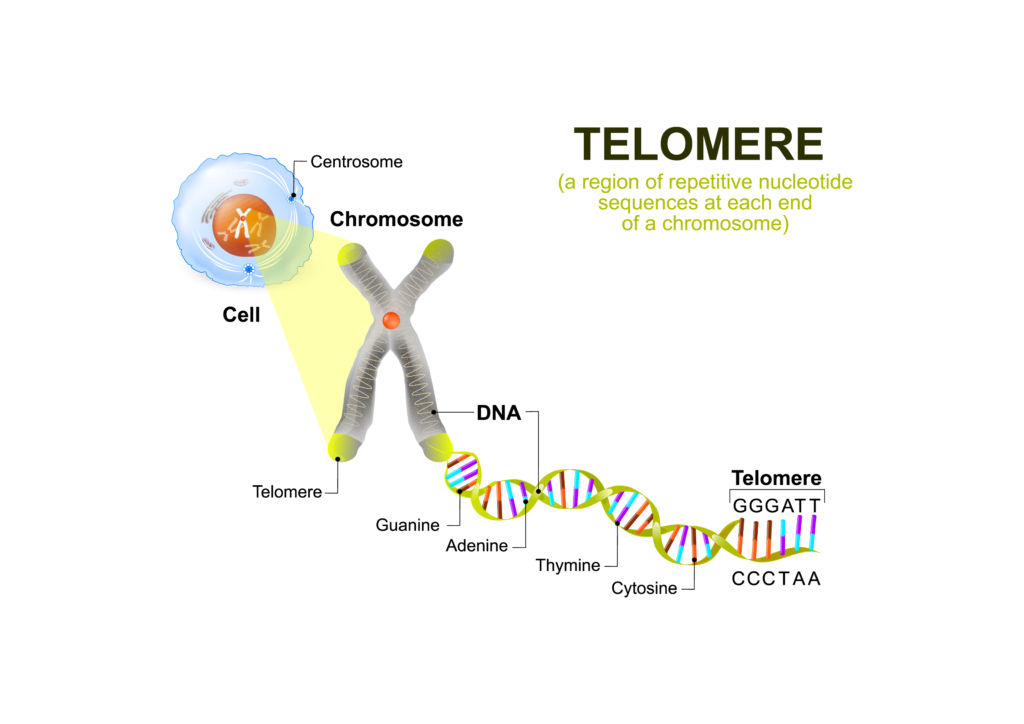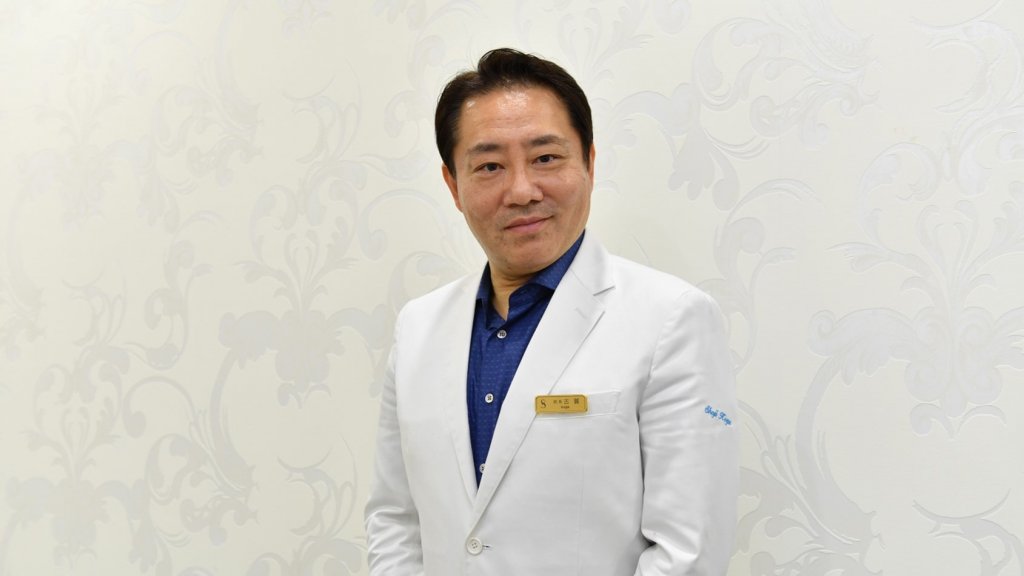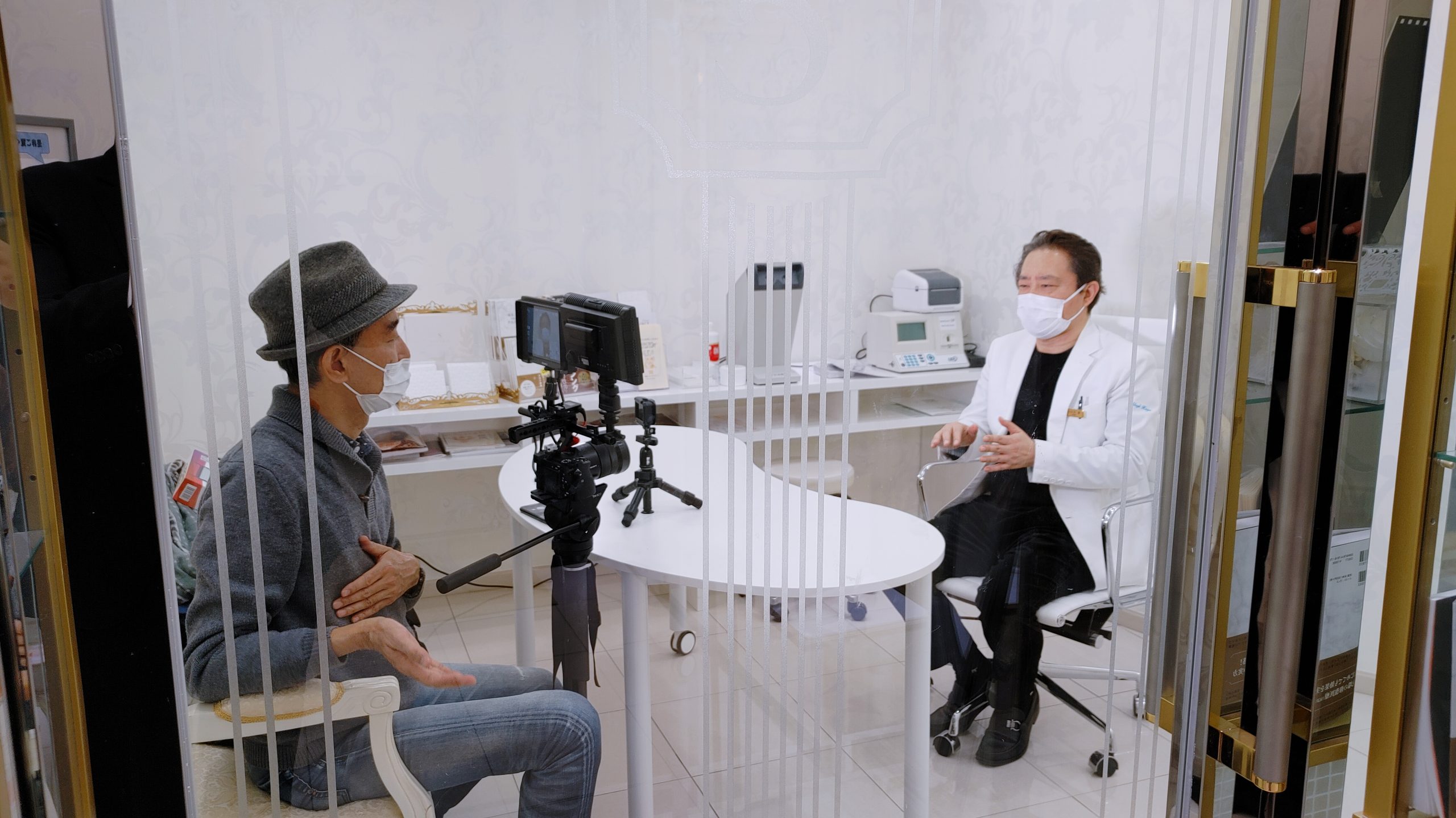The key to supporting the ‘Age of 100 for Humanity’ lies in regenerative medicine using ‘SGF’
With increasing average lifespans, the concept of the ‘Age of 100 for Humanity’ has emerged. To maintain a healthy and vibrant state both physically and mentally beyond the age of 100, it is essential to keep cells youthful and functioning optimally. Fulfilling the wish of many to rejuvenate aging cells, ‘SGF (Supernatant of Dental Pulp Stem Cell Cultures)’ makes this possible.
SGF (Supernatant of Dental Pulp Stem Cell Cultures)

SGF (SOLARIA Growth Factor) is the supernatant of dental pulp stem cell cultures developed by Dr. Koshitsugu Koga, a medical doctor. Stem cells from the dental pulp of deciduous teeth, ranging from ages 8 to 12, are cultured. After aspirating and washing the culture medium, a recovery culture medium is added. After 48 hours, cells are removed using a dedicated filter, and the preparation is completed after confirming under a microscope that no cells are present.
SGF, which contains many bioactive substances such as cytokines and exosomes
SGF to complement the limitations of stem cell transplantation
Conventionally, stem cell transplantation has been the mainstay of regenerative medicine and has been supported by many medical institutions. However, it cannot be denied that there are limitations to its widespread use, such as the tendency for tumor formation during the transplantation process, the risk of cancer development, and issues regarding standardization, administration methods, preservation, and cultivation methods, among others. Additionally, the cost associated with stem cell transplantation is high.
In contrast, SGF has features that excel in both safety and effectiveness. By manufacturing and conducting component analysis in advance, standardized products of consistent quality can be used. This allows for high-quality mass production at a lower cost.
SGF, which resolves the problems faced by stem cell transplantation and further enhances efficiency and effectiveness, is poised to become a pivotal factor in the transition phase of regenerative medicine.
Expected Effects of SGF
By utilizing SGF in regenerative medicine:
- Regenerative medicine
- Anti-aging medicine
- Aesthetic medicine
significant benefits are anticipated to be realized.
Restorative Medicine
SGF (Deciduous Tooth Pulp Stem Cell Culture Medium) contains over hundreds of bioactive substances. Therefore, when SGF is administered via intravenous drip or nasal spray, liquid factors including exosomes exhibit paracrine effects, which can lead to a reduction in the risk of onset and recovery for many diseases.
By utilizing SGF:
- Enhancement of frontal lobe function and cognitive function
- Strengthening of vascular endothelial cell function
- Improvement of testicular function
Impact of SGF Administration on Telomeres
The major reason why SGF is effectively utilized in restorative medicine and aesthetic medicine lies in the “telomeres”. Telomeres are structures located at the ends of our chromosomes, serving the dual role of protecting the chromosomes and copying them during cell division.
Research by Nobel Prize-winning biologist Dr. Blackburn and others has revealed that this structure is a key element in determining human lifespan and aging. Telomeres shorten as cells divide repeatedly. As telomeres shorten, cells enter a state of aging, making them more susceptible to disease. This aging process is also visible in the form of wrinkles, dark spots, and sagging skin.
It has been discovered that SGF therapy has telomere shortening suppression and elongation effects. This is due to the action of bioactive substances contained in SGF, which promote cellular activation.
Results have shown that continuous SGF administration therapy of 40 milliliters per month, over both short and long periods, leads to a decrease in the numerical value of “telomere age”, which tends to increase with aging.
Anti-Aging Medicine
SGF has been found to be useful in improving concerns commonly faced by men as a means of anti-aging medicine. “Erectile dysfunction (ED)” and “Androgenetic alopecia (AGA)” are examples of concerns where the effects of SGF can be expected.
Treatment of ED with SGF
In conventional ED treatment, substances that promote erection act on vascular endothelial cells. However, if there is deterioration in the function of these cells, secretion of the substance does not occur. SGF has the ability to normalize the function of vascular endothelial cells, thereby promoting improvement in symptoms without the use of medication.
Treatment of AGA with SGF
Utilizing Examination Equipment According to Purpose
In addition to telomere testing, our clinic provides various examination equipment tailored to different purposes.
For treatments targeting diseases such as diabetes, blood tests are conducted. The purpose of this is to quantify whether there have been changes in blood sugar levels due to SGF treatment. We have also introduced examination equipment such as the “LOX-index” for evaluating the risk of stroke and myocardial infarction, and the “MCI (Mild Cognitive Impairment) Screening Test” for early detection of Alzheimer’s disease.
With advanced treatment methods and a variety of examination equipment, we are able to provide the quality, safety, and results of SGF treatment in an appropriate manner.



